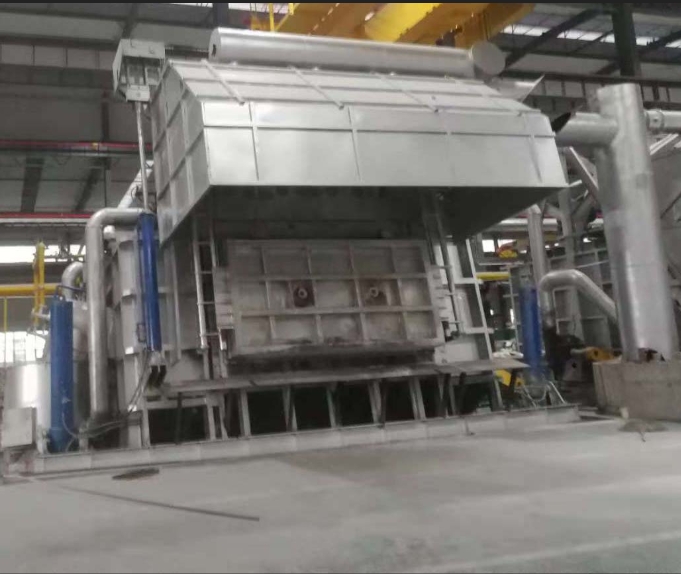The reverberatory furnace is a traditional pyrometallurgical melting furnace. According to the nature of the operation, it can be divided into two categories: periodic operation and continuous operation; according to its smelting characteristics, it can be divided into several types such as smelting, melting, refining, and forging.
The basic principle of reverberatory furnace smelting In the reverberatory furnace smelting process, the main endothermic reaction is carried out on the material slope, followed by the exothermic reaction of generating slag. In the total heat balance of the smelting process, the heat released by the generated slag does not exceed 6%~8% of the heat required for the smelting process. If the blasted air is not preheated, 85%~90% of the total heat required for reverberatory furnace smelting comes from the combustion of fuel, and only a small part of the heat generated by the combustion of fuel is consumed in the melting of the charge, and most of it is taken away with the furnace gas and compensated for the loss. The actual consumption of fuel in the smelting process is generally 2~3 times the theoretical requirement.

Theory of reverberatory furnace smelting In reverberatory furnace smelting, in addition to the endothermic reaction occurring on the raw material slope, there is also an exothermic reaction of slag. In the heat balance of the entire smelting process, the heat discharged by the slag will not exceed 6%-8% of the heat required for smelting. Without preheating the blown air, the total heat consumed by the reverberatory furnace during the smelting process accounts for about 85%-90%, and only a small part is consumed in the melting of the charge during the combustion process. In the smelting process, the actual consumption of fuel is usually 2-3 times the theoretical demand.
The main heat source for reverberatory furnace smelting is carbonaceous fuel, which burns in the furnace space composed of the furnace top, furnace wall, material slope and molten pool surface. During the fuel combustion process, a large amount of high-temperature gas will be released, which transfers heat energy to the furnace top, furnace wall, material slope and molten pool surface. The fuel burns continuously, and the generated gas flows continuously from the heating end of the furnace to the tail of the furnace. During the flow process, heat exchange occurs between the gas, charge, furnace wall, furnace top and molten pool. The main modes of heat transfer are radiation and convection, and radiation plays a leading role.
The charge and the molten pool surface obtain heat from both the airflow and the radiant heat from the high-temperature furnace top and upper furnace wall. Since the thermal conductivity of the charge is low and the heat transfer to the depth of the charge layer is slow, the surface of the charge layer is quickly heated to the melting point. The melted surface charge flows into the molten pool along the charge slope, exposing the underlying charge layer. It also obtains heat energy from the airflow, the furnace roof and the upper furnace wall, and flows into the molten pool after melting. Therefore, the melting process of the charge in the reverberatory furnace is carried out in a relatively thin surface layer of the charge slope, and the thin layer of material is continuously melted and flows into the molten pool in sequence.
The surface of the charging area and the molten pool area can obtain heat from the airflow, and can also obtain heat from the high-temperature top and the top wall. Because the thermal conductivity of the charge is low, the heat diffuses slowly into the layer, so that the surface of the charge layer quickly heats up to the melting point. The molten upper charge flows into the molten pool along the charge slope, exposing the lower layer of the charge, and absorbs heat from the airflow, the furnace roof and the upper wall, and flows into the molten pool after melting. Therefore, in the reverberatory furnace, the melting of the charge is carried out on a very thin slope surface, and the thin material is continuously and continuously melted and enters the molten pool area.
The heat transfer method in the furnace is not only based on the reflection of the flame, but more importantly, it relies on the radiation heat transfer of the furnace top, furnace wall and hot gas. In terms of its heat transfer method, many furnace types (such as heating furnace, open hearth, etc.) can be classified as reverberatory furnaces. Generally refers to the reverberatory furnace used for non-ferrous metal smelting. Reverberatory furnaces are widely used in non-ferrous metal smelting, and are used in drying, roasting, refining, melting, heat preservation and slag treatment processes.